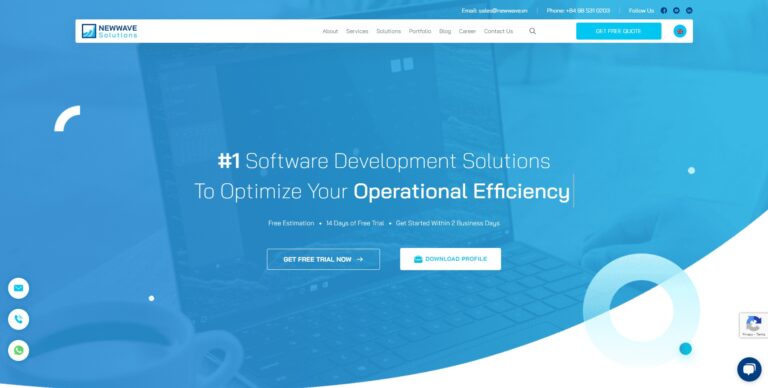Embracing Innovation: The Future of the Automotive Business

The automotive industry has witnessed remarkable transformations over the years, evolving from the invention of the automobile to the development of electric and autonomous vehicles. With advancements in technology and changing consumer preferences, the automotive business is poised for an exciting and dynamic future. In this article, we will explore key trends and innovations that are shaping the automotive industry, and discuss how businesses can embrace these changes to stay ahead in the game.
Electrification: The Rise of Electric Vehicles
One of the most significant transformations in the automotive industry is the shift towards electric vehicles (EVs). With growing concerns over climate change and the need for sustainable transportation, EVs have gained considerable momentum. Major automakers are investing heavily in the development and production of electric cars, leading to increased consumer adoption. This shift has not only driven advancements in battery technology but has also created new business opportunities in charging infrastructure, energy storage, and renewable energy integration.
Autonomous Driving: The Road to Self-Driving Cars
Autonomous driving technology is another game-changer in the automotive business. While fully self-driving cars are not yet mainstream, numerous companies are investing in research and development to make this a reality. Autonomous vehicles have the potential to enhance road safety, improve traffic efficiency, and redefine the concept of personal mobility. Automotive businesses are exploring partnerships with technology companies and investing in advanced driver-assistance systems (ADAS) to develop autonomous capabilities. Additionally, new business models such as ride-sharing and mobility-as-a-service (MaaS) are emerging, presenting opportunities for collaboration and innovation.
Connectivity and IoT Integration
The integration of connectivity and Internet of Things (IoT) technology in automobiles is revolutionizing the driving experience. Modern vehicles are becoming sophisticated connected devices, enabling seamless communication between the car, the driver, and the external environment. Connectivity facilitates features like real-time navigation, remote diagnostics, over-the-air software updates, and integration with smart home devices. As automotive businesses strive to provide a seamless digital experience, they must collaborate with technology companies and prioritize cybersecurity to protect connected vehicles from potential threats.
Shared Mobility and Subscription Services
The concept of car ownership is evolving with the rise of shared mobility and subscription-based services. Instead of owning a vehicle, consumers are increasingly opting for shared transportation options like ride-hailing and car-sharing. This trend has given rise to new business models where automotive companies are diversifying their offerings by launching their own ride-hailing platforms or partnering with existing service providers. Subscription-based services, where customers pay a monthly fee for access to a fleet of vehicles, are also gaining popularity. Automotive businesses need to adapt to these changing consumer preferences and explore innovative ways to participate in the shared mobility ecosystem.
Sustainability and Circular Economy
As sustainability becomes a global priority, the automotive industry is focusing on reducing its environmental impact. Companies are investing in sustainable manufacturing practices, using recycled and eco-friendly materials, and implementing energy-efficient production processes. Additionally, the concept of a circular economy is gaining traction, promoting the recycling and repurposing of automotive components and materials. Automotive businesses need to align with sustainability goals, not only to meet regulatory requirements but also to appeal to environmentally conscious consumers.
Conclusion
The automotive business is on the cusp of a transformative era, driven by electrification, autonomous driving, connectivity, shared mobility, and sustainability. To thrive in this evolving landscape, automotive companies must embrace innovation, adapt to changing consumer preferences, and forge strategic partnerships with technology firms. Embracing electric and autonomous vehicles, integrating connectivity and IoT technology, participating in shared mobility, and adopting sustainable practices are key steps for automotive businesses to secure their position in the future. By leveraging these opportunities, the automotive industry can continue to shape the way we travel and redefine mobility for generations to come.
Business Listings Related to the Article: Embracing Innovation: The Future of the Automotive Business
Newwave Solutions
Newwave Solutions, a top-notch Software Development Company boasting over 11 years of experience, is at the forefront of business revolution.
- Category
- Web Design & Development
More Articles Like: Embracing Innovation: The Future of the Automotive Business
The Power of Disruptive Innovation: Transforming Industries and Shaping the Future
Disruptive innovation is a concept that has revolutionized industries, reshaped markets, and transformed the way businesses operate. Coined by Harvard Business School professor Clayton Christensen in the late 1990s, disruptive innovation refers to the process by which a new product, service, or technology disrupts and displaces established market leaders. This phenomenon has become a driving […]
DirBz.com: Boost Your Business Visibility with an Affordable Web Directory Listing
In the vast landscape of the internet, businesses strive to stand out and make their mark. One effective way to enhance visibility is through web directories, and DirBz.com emerges as a cost-effective solution tailored for businesses of all sizes. This business-oriented web directory offers a platform for enterprises to showcase their websites, reaching a wider […]
Odoo: The Comprehensive Business Management Software Suite
In the rapidly evolving world of business and technology, managing various aspects of an organization efficiently and seamlessly is paramount to success. Enter Odoo, a comprehensive business management software suite that offers a plethora of integrated applications to streamline processes, increase productivity, and facilitate growth. In this article, we delve into the world of Odoo, […]






